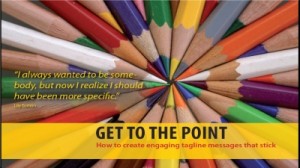As you advance your career, the ability to express yourself effectively – in a concise, precise and memorable way – becomes even more important. Executives from technical backgrounds – like finance and engineering – can benefit from specifically becoming more aware about their communication style. Being able to adjust to different audiences is the hallmark of successful executives.
There are broadly fives types of communication abilities:
0.0 Ineffective
Unfortunately many executives have not addressed their presenting and communication skills and their personal brand suffers as peers and line managers become frustrated by the amount of time and effort it takes for them to convey a message. If complaints about how an executive comes across are raised on a consistent basis, urgent attention is required.
1.0 Competent
Over time many executives improve their communication to a competent level. They are able to deliver their functional presentations like technical reports and financial statements without too many problems. However, as they rise through the ranks more effort is needed to continually hone their ability. As the executives needs to deliver more presentations to senior leaders and to more diverse audiences, they need deeper preparation and rehearsal to effectively convey their message. If they do not work on these skills then they are in danger of slipping back into the ” ineffective” zones. At this stage many executives resist the need to address their communication skills and fall-back on their technical abilities – to the long term detriment of their careers.
2.0 Influential
Executives who are influential are able to shape a clear message and deliver it effectively to a wide range of audiences. These executives are most comfortable on topics closest to their experience. For example, finance executives are able to deliver technical presentations to non-technical senior audiences. Executives are regarded as good presenters and through consistent improvement and rehearsal are able to deliver to larger audiences and engage more diverse audiences.
3.0 Impactful
Executives in this zone consistently deliver confident presentations and are “always ready to deliver”. They string together influential presentations. They are the go to executive when a media interview is called at short notice. They are able to take complex messages and connect it to diverse audiences so that each audience buy-into the intent of the message. Executives with impactful communication skills build significant support from internal and external stakeholders and are invited to represent the company at public events. They have developed their communication skills to a point where they can quickly and effectively prepare and deliver powerful and memorable speeches.
4.0 Change-makers
When your organisation needs to articulate a major change, they turn to executives in the change-maker category of communication skills. These executives can build a case for the change by reaching out, understanding and shaping how the change offers opportunity for each stakeholder. The change-makers play a key role in creating, articulating and cascading the message throughout the organisation. Their ability to clarify, hone and sharpen the message is essential for any large company making an important change. Senior leaders need to advance their communication skills to this category especially when they are operating in a turbulent and dynamic environment.
5.0 Executive Presence
Executives who can speak with executive presence are a key weapon in a company’s communication strategy. Their value to the organisation goes way beyond their communication skills. Executives, like Steve Jobs or Richard Branson become the leading tip of the spear in positioning their companies as thought-leaders and premium brands in their markets. They attract the best talent to work with them and they can attract attention to even mundane presentations – like product launches.
Conclusion
Where would you position your communication and presenting ability on the Speak with Executive Presence Pyramid? Do you have a plan to take a step up to the next level. As executives get to the top of their technical silo, their communication abilities will dictate how much freedom they have to decide on their future career steps. Contact us if you would like to know more about how to ascend the pyramid. We especially help executives from technical backgrounds to become more influential and impactful in their presentation and communication skills.
About the Author: Warwick J Fahy
“I work with senior executives working for multinationals in Greater China who lack the executive presence to effectively influence key stakeholders. While these executives are very smart, very knowledgeable and highly capable, a key piece missing. Their executive communication skills need polishing. I help executives build a strong foundation in executive communication so that they are able to better think, speak and act like a leader to set and implement strategy. Recently, we helped a CEO turn his communication style from being nervous and uninspiring into a more engaging, confident and purposeful executive.” Learn more about who I help here.
Find out whether your executive team is performing to the best of their potential with Warwick’s article “10 Warning Signs Your Leaders Lack Executive Presence”. Email me and I’ll send you a PDF version.
Warwick is the author of “The One Minute Presenter: 8 steps to successful business presentations in a short attention span world”. Warwick is author of the forthcoming book ‘Speak with Executive Presence in China’






